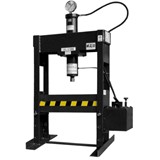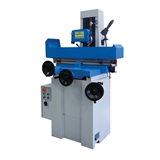Key Takeaways
- Apprentices are a long-term investment, not a source of cheap labour. The first year involves a significant productivity dip for your supervising tradesperson. Budget for this time cost, not just the wage.
- Hiring for attitude over aptitude yields better results. You can teach technical skills to someone with a strong work ethic and positive attitude, but it's nearly impossible to fix a poor attitude, regardless of initial skill.
- The mentor match is critical. Pairing an apprentice with a senior tradesperson who lacks patience or teaching skills can lead to high turnover. A good mentor is your single most important factor for success.
- Understand your compliance obligations first. Australian WHS laws place a higher duty of care on employers for young workers. You must provide constant, direct supervision for high-risk tasks.
- Leverage financial incentives, but don't depend on them. Government subsidies help offset training costs but rarely cover the full expense of a first-year apprentice. Calculate your total cost before committing.
Introduction: The skills gap and the apprentice imperative
For small business owners in Australia’s industrial sectors, finding skilled staff in 2025 feels less like recruitment and more like searching for a needle in a haystack. The national skills shortage, particularly in traditional trades like metal fabrication, electrical, and heavy vehicle mechanics, has reached a critical point. Data from Jobs and Skills Australia consistently shows that technicians and trades workers are among the occupations with the most persistent shortages, with nearly half of employers struggling to fill vacancies. Relying on finding fully qualified staff in the open market is no longer a sustainable strategy for growth.
This brings apprenticeships sharply into focus. For many small businesses, taking on an apprentice has shifted from being "a nice thing to do" to a critical business decision for long-term survival. However, hiring an apprentice is a significant commitment of time, money, and resources. This article will help you navigate the pros and cons in the current Australian landscape, understand the true costs, and build a framework to determine if hiring an apprentice is the right strategic move for your business in 2025.
The real-world cost vs. benefit analysis
Before contacting an Australian Apprenticeship Support Network (AASN) provider, it’s crucial to conduct an honest cost-benefit analysis. The benefits are substantial, but the initial costs are often underestimated.
Benefit: Building your perfect employee
When you hire a qualified tradesperson, you often have to spend months helping them unlearn habits acquired elsewhere. An apprentice learns your systems, your quality standards, and your safety culture from day one. You are essentially custom-building a future senior employee who understands every facet of your operation. In an environment where skilled labour is scarce, this control over your future talent pipeline is invaluable.
Cost: The hidden productivity drain
The biggest cost of a first-year apprentice isn't their wage; it's the productivity cost of your senior staff. A common trap is to assume an apprentice provides an extra pair of hands from day one. In reality, effective supervision requires a senior tradesperson to slow down, explain tasks, double-check work, and fix mistakes. Industry estimates suggest a senior tradesperson can lose up to 20% of their own productive time during the first 6-12 months of mentoring an apprentice. You must factor this into your financial planning.
Navigating government incentives and payroll
To offset the initial cost and encourage businesses to take on trainees, federal and state governments offer a range of financial incentives. As of 2025, the Australian Apprenticeships Incentive System provides support targeted at priority occupations.
- Priority Wage Subsidy: For apprentices in occupations on the Australian Apprenticeships Priority List, employers may be eligible for a wage subsidy. This is often structured as a percentage of the apprentice's wages for the first year, potentially covering 10% of wages in the first year and tapering off.
- Trainee Support: Apprentices themselves may receive direct payments for living away from home or for completing certain modules, which reduces their financial stress and can improve retention rates.
However, these incentives come with strict eligibility and reporting requirements. It is essential to work closely with your AASN provider to understand exactly what you are entitled to. A common mistake is to build a business case entirely around an incentive that changes or for which you are not eligible. View incentives as a helpful bonus, not the core reason for hiring.
Step 1: Get the hiring process right
Many apprenticeship failures begin at the hiring stage. When assessing candidates, particularly school-leavers with no industry experience, traditional interview methods often fail.
- Prioritise attitude and reliability: Look for candidates who demonstrate genuine interest, punctuality, and a willingness to learn. Ask behavioural questions like, "Tell me about a time you had to learn something difficult and stuck with it." A candidate who worked part-time consistently at a fast-food restaurant often has more proven reliability than one with slightly better grades but no work history.
- Conduct a practical work trial: A formal interview can be daunting for a 17-year-old. A better approach for industrial roles is a one or two-day paid work trial (ensure you comply with minimum wage and insurance requirements). You'll learn more about their problem-solving ability, initiative, and how they interact with your team in a single day than in three interviews.
Step 2: Create a structure for success
An apprentice left to "just watch" will become bored, disengaged, and potentially leave. A structured environment is key to retention. The national completion rate for trade apprentices hovers around 55-60%, and a primary reason for dropouts is poor workplace support.
A realistic scenario: The mentor mismatch
A small engineering workshop in regional Queensland hires a promising first-year apprentice. The owner pairs them with a highly skilled, 30-year veteran welder. However, the senior welder is impatient, prefers to work alone, and sees training as a distraction. The apprentice spends most days sweeping floors and rarely gets hands-on time with the equipment. After six months, feeling frustrated and having learned little, the apprentice quits to take a job in a different industry.
The solution: Mentoring is a skill, not a rank. The business owner should identify a supervisor who genuinely wants to teach. This might be a younger tradesperson who recently completed their own apprenticeship and remembers the learning process clearly. Create a structured plan where the apprentice spends time with different tradespeople to learn various skills, and schedule a formal 15-minute check-in with the mentor every Friday afternoon to discuss progress and challenges.
Step 3: Understand your compliance and safety obligations
When you hire an apprentice, particularly a minor (under 18), your Work Health and Safety (WHS) obligations intensify. Australian regulators expect a higher standard of care and supervision.
- Direct supervision for high-risk tasks: You cannot allow an inexperienced apprentice to operate machinery like press brakes, lathes, or welding equipment without direct, one-on-one supervision from a qualified person. "Direct supervision" means being able to see and communicate with them at all times.
- Structured training plan: You are legally responsible, along with the Registered Training Organisation (RTO), for ensuring the apprentice receives comprehensive training. Keep meticulous records of all on-the-job training and competency assessments. This documentation is vital during any SafeWork investigation or audit.
- Cultural fit: A workplace culture that tolerates shortcuts or casual bullying is toxic for a new learner. You must ensure your apprentice is entering a respectful and safety-conscious environment.
Managing apprentice performance: A practical framework
Dealing with an underperforming apprentice, whether due to a poor attitude or consistent lateness, is challenging. Ignoring the problem is risky, so a structured approach is essential for learners on a formal training contract.
1. Implement early, documented intervention
Address minor issues like punctuality immediately with an informal, private chat. Focus on the behaviour, not the person. Keep a log of these conversations, including dates and outcomes, as this documentation becomes crucial if a pattern develops.
2. Use the training plan as your performance guide
Keep feedback objective by anchoring it to the formal training plan. This transforms difficult conversations into constructive coaching sessions focused on facts, not feelings. Frame reviews around specific competencies: "To sign off on this unit, you need to demonstrate X. Let's set a goal to master that by next month."
3. Involve your AASN provider when issues persist
If informal methods fail, contact your Australian Apprenticeship Support Network (AASN) provider. They aren't just for paperwork; they can facilitate formal mediation, help create performance improvement plans, and manage formal processes if the working relationship truly breaks down.
Conclusion
Hiring an apprentice in 2025 is one of the most powerful strategies an Australian industrial business can deploy against the persistent skills shortage. It is a commitment that requires a significant investment in time and mentorship upfront, and it carries clear compliance responsibilities. However, by viewing it as a long-term strategy to build talent from the ground up, you move from being a victim of the skills market to actively shaping your own future workforce. The right apprentice, guided by a strong mentorship culture, will repay your initial investment many times over in loyalty, productivity, and future-proofed skills for your business.




-160x160-state_article-rel-cat.jpg)





















